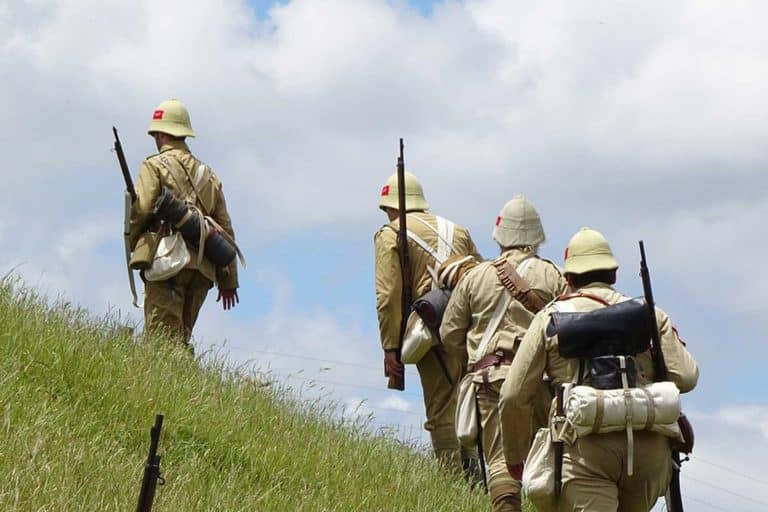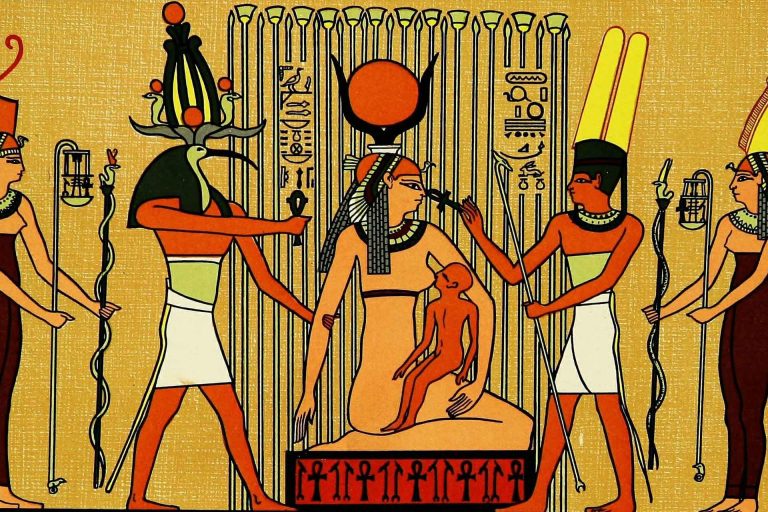The Legacy of the Zulu: Africa’s Fearsome Battle-Bred Warriors
Deep within the heart of Africa, the Zulu nation stands as a testament to the indomitable spirit of a people who carved an empire with their resilience, strategic prowess, and unparalleled warrior culture. Over the centuries, the story of the Zulu has become inextricably entwined with tales of heroism, strategic brilliance, and an enduring legacy that transcends the annals of warfare.
The Emergence of a Mighty Nation
The rise of the Zulu nation began in the early 19th century under the leadership of King Shaka Zulu. Born in 1787, Shaka transformed the Zulu from a small clan into a formidable kingdom by centralizing power, innovating military tactics, and expanding territories. His strategies not only ensured political dominance but also instilled a sense of pride and unity among the tribe. The society became structured, with age-regiments or ‘ibutho’ ensuring that every male was prepared for warfare, and a centralized kraal system reinforced Shaka’s authority.
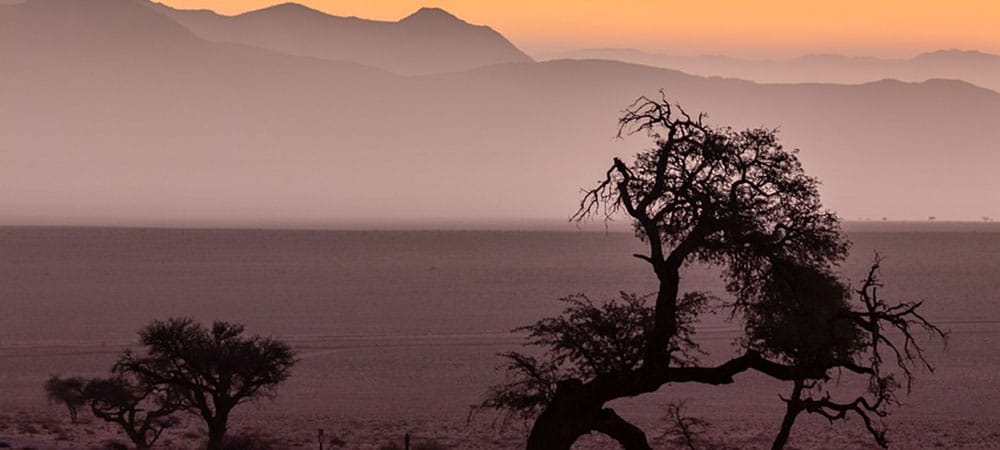
The heartland of the Zulu kingdom is located in what is today known as the KwaZulu-Natal province of South Africa. This region is defined not only by its political boundaries but also by its diverse landscapes, which played a significant role in the development and sustenance of the people. The Drakensberg Mountains, which form a natural barrier with the Kingdom of Lesotho to the west, are a notable feature. These mountains played a strategic role during times of conflict, serving as a natural defense against invasions.
However, Shaka’s later years were marked by increasing cruelty and erratic behavior. Historians believe the assassination of his mother in 1827 may have profoundly affected his mental health. He became more tyrannical, instituting policies that led to widespread suffering. One of the most infamous decrees after his mother’s death was the ban on planting crops and the killing of cows, ensuring that no milk would be available. This led to a famine, further complicating matters for his subjects.
In 1828, amidst rising internal tensions and unrest, Shaka Zulu met a tragic fate. Seen as a growing threat by his own people, he was assassinated by his half-brothers Dingane and Mhlangana. Dingane then succeeded Shaka as the leader of the Zulu Kingdom. While Shaka’s reign was marked by both expansion and innovation, it was also a time of intense violence and social disruption. Nevertheless, his legacy as a military genius and the founder of the Zulu Empire remains intact.
The Making of a Zulu Warrior
Becoming a warrior in the mighty nation was more than a mere rite of passage; it was a deeply entrenched way of life. Young boys, as early as six, were introduced to regimental systems. They underwent rigorous physical training, which was accompanied by lessons in discipline, loyalty, and courage.
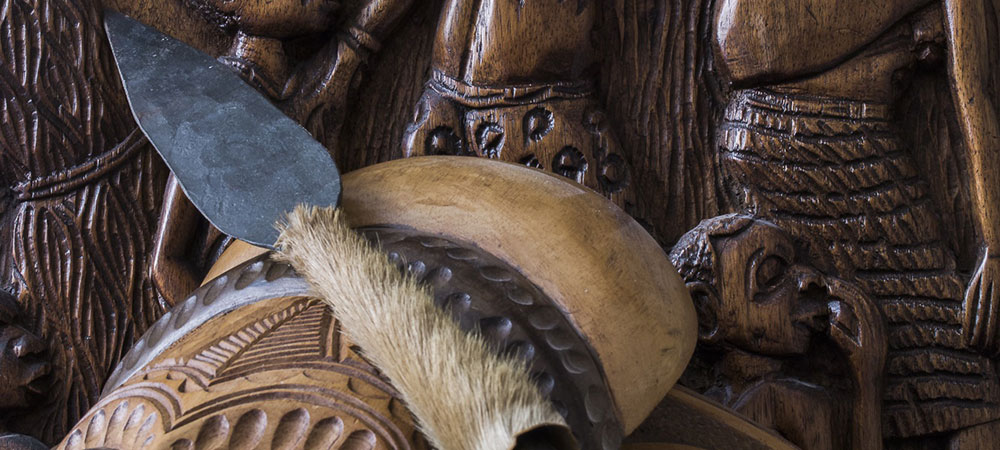
The weapons of choice for a Zulu warrior were the ‘iklwa’, a short stabbing spear, and the ‘isihlangu’, a large shield made from cowhide. These tools became symbolic representations of a warrior’s pride. The ‘iklwa’, named for the sound it made when extracted from a victim’s body, was a testament to Shaka’s genius. By favoring this over the traditional long throwing spears, Shaka ensured close-quarter combat, which played to the Zulus’ strengths.
Other weapons employed by the Zulu were:
- Iwisa (Knobkerry):
- A short wooden club with a heavy rounded knob or ball at the end, the iwisa was employed in close combat.
- Apart from its combat use, the knobkerry also had a ceremonial function and was a symbol of a warrior’s status and achievements.
- The club could also be thrown at an opponent in battle, though its primary function was for hand-to-hand combat.
- Ishieldi (Zulu Shield):
- While not a weapon in the traditional sense, the large oval shields made of cowhide were vital to the Zulu warrior’s arsenal.
- The shield was used both defensively, to protect from enemy weapons, and offensively, in conjunction with the iklwa during combat.
- The color and pattern on the shield indicated a warrior’s rank and regiment. For instance, younger warriors might have had mostly black shields, while those of higher rank or older age might have had more white in their shields.
- Umhlahlandlela (Throwing Spear):
- Before the iklwa became dominant, the Zulus, like many other African tribes, used throwing spears. These were lighter and longer than the iklwa.
- Even after the introduction of the iklwa, throwing spears still had a place on the battlefield, especially for initial volleys before the main engagement.
- Isiphapha or Umkhonto (Throwing Club):
- This was a smaller, lighter version of the iwisa, designed to be thrown. It had a thinner stem and was often adorned with a feather for aerodynamic stability.
This weaponry, combined with their innovative tactics and regimental discipline, made them one of the most formidable military forces in southern Africa during the 19th century. The design of their weapons, especially the iklwa, epitomized the emphasis on aggressive close-quarters combat.
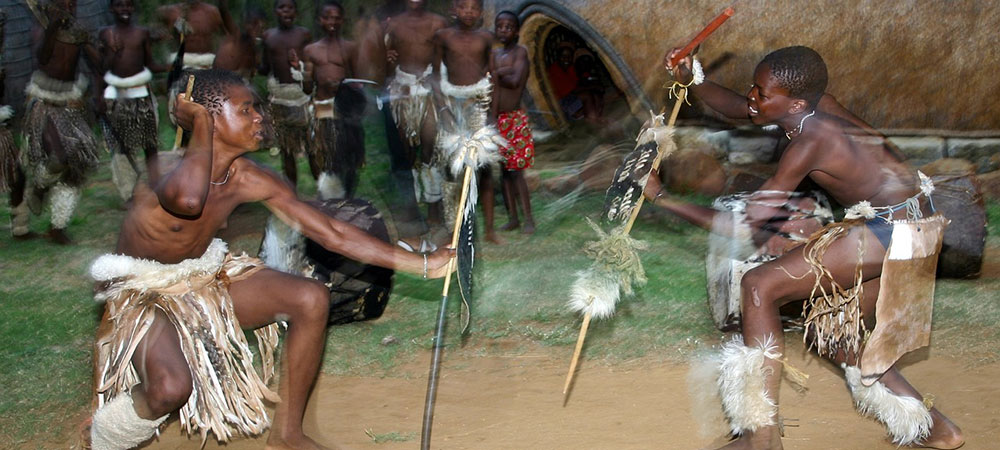
The Zulu military tactics stand as a testament to the genius of African warfare strategy, particularly during the 19th century under the leadership of King Shaka Zulu. Shaka, often hailed as a military innovator, introduced a range of tactics that transformed the Zulu from a relatively small tribe into a formidable warrior nation. Central to their battlefield strategy was the deep understanding of psychology and terrain, and the emphasis on quick movement and close-quarter combat, rather than relying on long-range weaponry.
Perhaps the most iconic of the Zulu tactics is the “Horns of the Buffalo” formation, or “impondo zankomo” in the Zulu language. This tactical formation was designed to encircle and overpower enemy forces rapidly. It was made up of three main elements: The “chest” or “loins”, which was the central and strongest unit, would engage the enemy directly, holding them in place.
Flanking the chest were the “horns”, typically younger and swifter warriors, which would move around the battlefield, enveloping the enemy from both sides. The “loins”, a reserve force situated behind the chest, stood ready to reinforce any part of the line or exploit breakthroughs. This strategic encirclement often resulted in the swift and decisive defeat of the enemy, catching them off guard and offering them little chance for retreat.
Beyond the “Horns of the Buffalo”, the tribe placed a strong emphasis on mobility and endurance. Warriors, often barefoot, were trained to cover vast distances at remarkable speeds, allowing for rapid deployment and the element of surprise. In close combat, the large cowhide shields, combined with their short, stabbing spears called iklwa, gave them a distinct advantage. The shield would be used to deflect and hook away an opponent’s shield, opening them up for a deadly strike with the iklwa. These tactics, when combined, made their army one of the most feared in southern Africa, leaving an indelible mark on military strategy and history.
Foreigners, especially British colonialists, were both awed and terrified by these African warriors. European diaries from the 19th century often allude to the imposing sight of Zulu impi (warrior units) on the march, with their rhythmic chants, precise formations, and fierce determination. The Zulu war cry struck terror into the ranks of opposing forces and is a well documented aspect of psychological warfare.
The Zulu War Cry: A Symbol of Unity, Courage, and Defiance
Their war cry, much like the haka of the Maori or the cries of other warrior societies, is a symbol of unity, courage, and defiance. It’s not just a vocal expression; it’s a spiritual and psychological preparation for battle, a means to invoke ancestral spirits, boost morale, and intimidate enemies.
The Zulu war cries, or “iziyobisi,” are rhythmic chants accompanied by a pulsating beat of shields, synchronized movement of spears, and an intense stomping of the ground. The powerful, deep vocalizations resonate with the strength of the Zulu warriors, instilling fear in the hearts of their enemies and building unity within their ranks.
The origin of the war cry, like many aspects of oral cultures, is shrouded in mystery and passed down through generations. It is believed that these chants find their roots in ancient traditions, where song and dance held significant places in societal rituals, celebrations, and rites of passage. These chants were modified and adapted to suit the martial needs of the Zulu kingdom as it grew in power.
For the Zulus, the presence and blessings of their ancestors are crucial, even on the battlefield. The war cry, in a way, is a call to the ancestral spirits to witness the battle, guide the warriors, and grant them victory. The belief that ancestors are watching provides spiritual strength and a sense of purpose.
Before the actual clash of spears and shields, the war cry serves as the first strike, albeit psychological. The powerful synchronized movements, the booming voices, and the intense rhythm can unnerve and demoralize opposing forces. It’s not just about showcasing strength, but also discipline, unity, and sheer willpower.
The Zulu war cry, while not used in actual battles today, still holds cultural significance. It’s performed during Zulu ceremonies, cultural events, and has even been incorporated into modern-day performances as a tribute to the Zulu warrior heritage.
The war cry is much more than just a battle chant; it’s an embodiment of the Zulu spirit—resilient, fierce, and deeply rooted in its traditions. Even today, the resonating beats of the war cry remind us of the might of the warriors and their rich legacy that continues to inspire awe and respect.
Battles of Legends: Triumphs and Defeats
As part of the British Empire’s expansionist objectives in southern Africa, British High Commissioner Sir Henry Bartle Frere sought to consolidate British influence by toppling the independent Zulu Kingdom. To achieve this, the British crafted an ultimatum designed to be unacceptable to the Zulu King Cetshwayo. As anticipated, the ultimatum was rejected, giving the British a pretext to invade Zululand. However, the subsequent campaign did not proceed as smoothly as the British had hoped.
At Isandlwana, a British camp was surprised and decisively defeated by a Zulu army. The British force, commanded by Lt. Col. Henry Pulleine and Lt. Col. Anthony Durnford, severely underestimated the combat effectiveness of the tribal warriors. Despite having modern rifles and artillery, the British troops were rapidly encircled and overwhelmed by the Zulu’s “Horns of the Buffalo” tactic. The battle culminated in the deaths of over 1,300 British troops, with the Zulu forces suffering significant casualties as well- approximately 1,000 warriors.
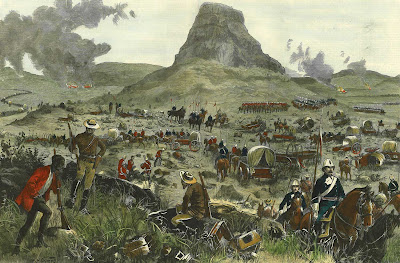
Following their success at Isandlwana, the Zulu forces achieved another victory later that same day at the Battle of Rorke’s Drift. However, this encounter was of a different nature. A relatively small British garrison, numbering just over 150, defended Rorke’s Drift against repeated assaults by a much larger Zulu force of an estimated 3,000 to 4,000. The defenders’ resilience was so remarkable that the battle has often overshadowed the scale of the defeat for the British at Isandlwana. The Zulus suffered heavy losses, with estimates of around 600 fatalities, compared to the British’s 17. Though the British managed to hold their ground, the Zulu warriors displayed incredible bravery and tactics, further solidifying their reputation as formidable opponents.

However, it’s essential to note that the British Empire eventually responded to the setbacks with reinforced campaigns, ultimately toppling the Zulu Kingdom by July 1879. Yet, the Zulu victories, especially at Isandlwana, remained a source of national pride and a poignant reminder that even the mightiest of empires could be humbled. The Battle of Isandlwana, in particular, resonates not just as a military lesson but also as a testament to the courage, skill, and determination of the the African nation.
A Rich Tapestry of Culture
The Zulu culture, rooted deeply in the heart of South Africa, stands as a vibrant testament to the continent’s rich history. It’s a culture that, despite the challenges of colonization and modernization, remains a beacon of Africa’s resilient spirit and diverse traditions.
Dance plays an integral role in Zulu culture, often used to convey a variety of emotions, commemorate events, or even prepare for certain tasks. The rhythmic footwork and vibrant movements of dances like the Indlamu, often referred to as the war dance, evoke a sense of pride and strength. Dancers, donning traditional regalia including animal hide shields and weapons, stomp their feet with forceful intensity, reflecting tales of bravery and courage. There’s also the Umkhosi woMhlanga, or the Reed Dance, a traditional dance performed by young maidens to celebrate their purity.
The artistry of the tribe is perhaps best displayed in their intricate beadwork. This isn’t merely for decorative purposes; each color and pattern woven into their beadwork narrates a story. Common colors like green, blue, and red, for instance, represent life, loyalty, and love respectively. Through necklaces, headbands, and other adornments, Zulus communicate messages of courtship, grief, or social status. For example, a woman might wear a specific beadwork pattern to indicate her marital status or to express feelings of love or heartbreak.
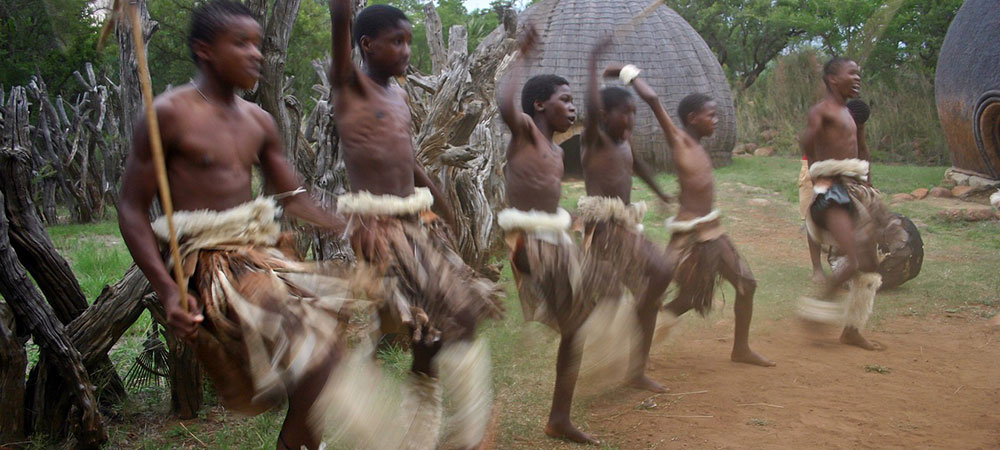
Soulful music is yet another pillar of the Zulu cultural experience. The deep, resonant notes of the isiginci, a Zulu guitar, or the rhythmic beats of the ingoma drums often accompany dances or ceremonies. Songs, passed down through generations, are more than just melodies; they are oral histories, preserving tales of love, war, triumph, and despair. The harmonious blend of voices in Zulu choral music, especially, conveys stories of community spirit and unity.
In essence, their culture is a rich tapestry of stories and traditions, expressed vividly through dance, art, and music. Each movement, bead, and note encapsulates a piece of the Zulu’s collective soul, ensuring that their tales of love, courage, and the human spirit echo for generations to come.

The Fall and Resilience of an african Nation
Post the Anglo-Zulu War in 1879, the once mighty Zulu kingdom was annexed by the British Empire. This marked the beginning of a period of strife, subjugation, and fragmentation for the Zulu people. However, like the phoenix, the Zulu spirit was never entirely extinguished. Over the years, the Zulus have sought to reclaim their history, heritage, and identity. Today, the Zulu nation stands as a symbol of African pride, resilience, and an enduring legacy that will forever echo in the annals of time.
In conclusion, the Zulus are not just warriors of legend; they are a people whose rich history, traditions, and indomitable spirit have withstood the test of time. The legacy of the Zulu is a testament to the power of unity, the resilience of spirit, and the timeless tales of heroism that inspire generations.




